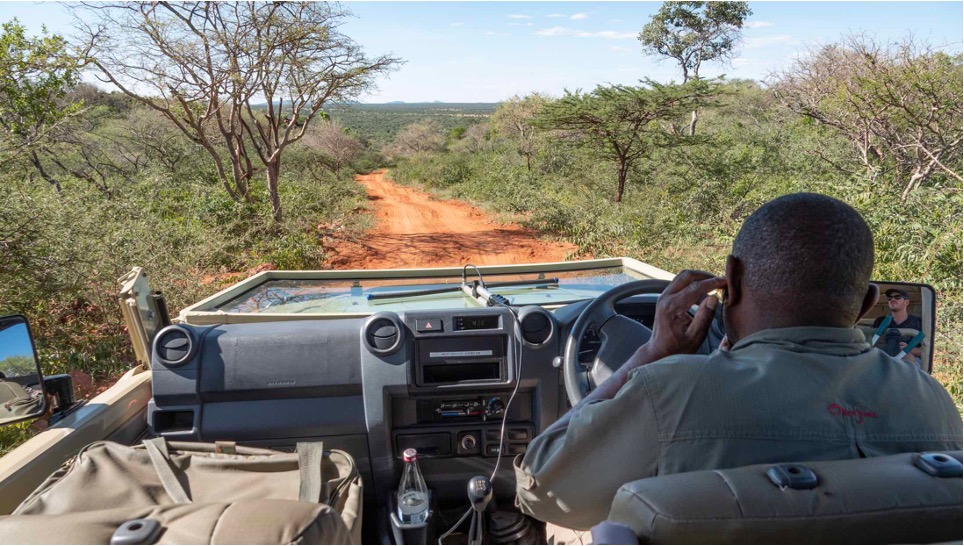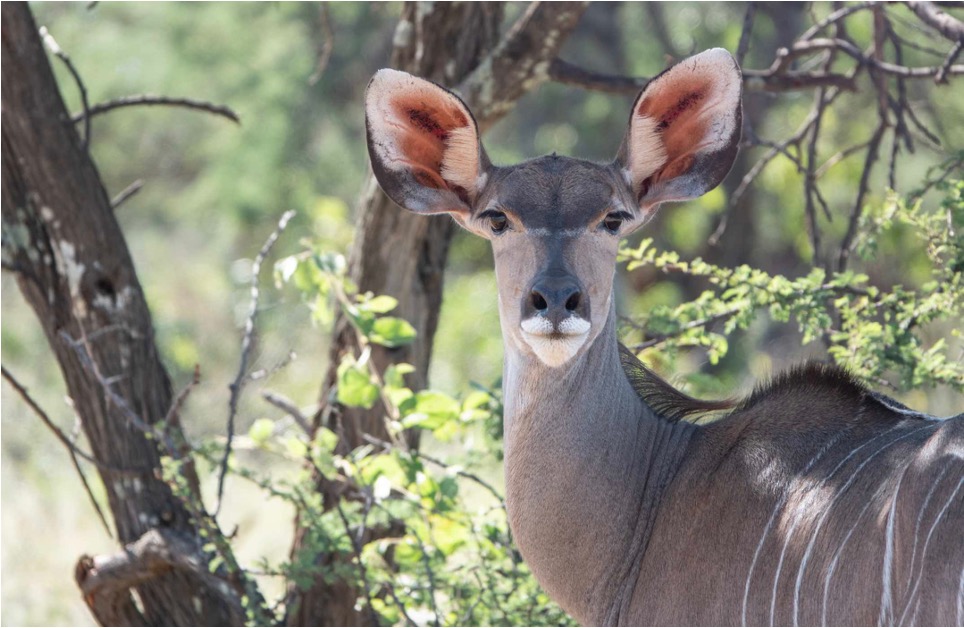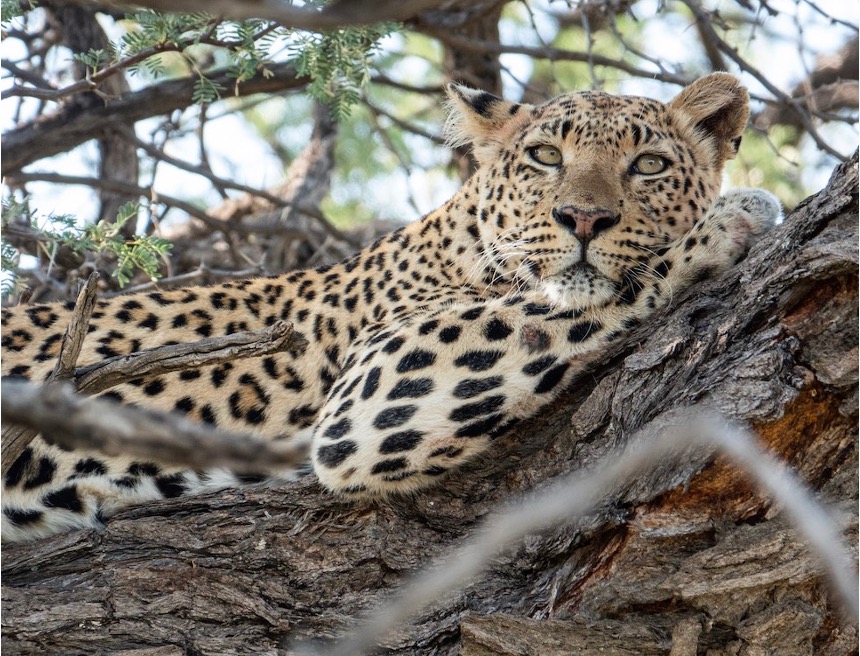How Wisdom is Creating Benefits for Tourism and Conservation Strategies
~
Founded in 1991, the AfriCat Foundation is based on the Okonjima Nature Reserve in Otjozondjupa region. The foundation conducts ecological research focusing on rare and endangered species. Over the years, this nature reserve has been practicing bush thinning for conservation and tourism and has perfected its process for maximum results and minimum environmental impact. Wayne Hanssen, the co-owner of Okonjima & AfriCat Founder, explains, “I have learnt the hard way at times, it is very sad to see the effects of the incorrect ways of doing bush thinning.”
Wayne explains that as a tourism and conservation operation, there have been many benefits to perfecting their process. “If you have a game farm, the biggest conservation benefit of bush thinning is that you don’t need to keep as much game on your farm. If you haven’t thinned you need so many more of each species, and this leads to overgrazing. You need about 10 hectares per animal, any more than that and the game will destroy your grasses in the years of drought. So bush thinning allows you to have much fewer animals on your farm and have a quality game drive.

Combining Strategies for Diversified Ecosystems
At AfriCat a combination of methods is used for maximum results. “I’ve seen that there isn’t one method that works alone. It’s a combination of methods and adaptations”, says Wayne. “If you live in an area with upwards of 400mm of rainfall, then a completely open grassy plain is a floodplain. A naturally occurring flood plain has a different composition of soil due to the regular flooding, tree roots battle to penetrate this soil and only certain grasses would be found in these areas. In our area, we live with bushveld, and you want some bushveld on your game farm because it has value to your wildlife.” Wayne explains that having a combination of bush and grass is of vital importance. “There is a benefit to having some bushveld, and not only grass plains. Ecosystems flourish in a mixed use space. Bushveld becomes shelter for animals in the cold, and we have found that animals survive on bush until the rains come and the grasses grow. In times of drought, even some of our pure grazers switched to browsing.”

With this understanding of the value of a diversified ecosystem, Wayne recommended the method they have used at Okonjima Nature Reserve. That being a combination of using a tyre dozer and roller. “With bush rolling you selectively drive over the bush, roll it flat and then leave it right there. When you roll flat, you protect the soil and give the grass opportunity to germinate where no animals can get to it. It also prevents soil erosion, by providing shade for the soil, and guides rainwater into the ground. Shade, water and protection.”
The Science Behind Wayne’s Method
Wayne, an avid researcher, explains the added benefits of his methods to the ecosystem. “Acacia mellifera (Blackthorn or Swarthaak) and Dichrostachys cinerea (Sicklebush) are the two biggest problem species with bush encroachment, but I was amazed to learn that the acacia tree is actually a legume, and so it has the ability to take nitrogen out of the air and through bacteria in the soil, can put nitrogen back into the soil. When an acacia is flattened, you will find a burst of regrowth in the vegetation around the rolled bush, as the roots release nitrogen into the soil, and you’ll have a burst of growth in grass species around the area that you have rolled. Nitrogen, phosphorus and potassium are the three most important nutrients for plants” says Wayne who goes on to explain that, this combined with the protective nature of leaving the rolled bush in the veld, provides a sanctuary for diverse grass regrowth.
Applying the Africat Way on Your Farm
For any farm, Wayne recommends, “You want about 80-100 Acacia Mellifera per hectare. So depending on the thickness of your bush, you want to leave all the trees but take out about 60% of your Mellifera species. Mellifera has a shallow root system with a high extraction of water out of the soil, but don’t take everything out, because you will destroy the soil.”
Wayne is also vehemently against using poisons, because of their long-term negative effects. He explains that even up to ten years later, poison can make its way into the underground root system of your trees and they can die. This can happen when using poison on one part of your farm that gets carried with rainwater into places not intended. “The rains take the poisons into the root systems of your big camel thorns and they die off years later. Their root system is so widely spread. It was devastating for us to lose these trees, so I am dead against herbicide for bush thinning.”

According to Wayne, the correct balance for optimal use of your land is one as close to natural processes as possible. “We live in such a beautiful system, where everything has its place. This year, we complained about the caterpillars, but a caterpillar creates the most amazing compost. This is why we have the incredible grasses we have this year, the fastest growing compost that comes from a caterpillar. We don’t want one type of grass in the ecosystem, we want mixed use. Open areas are important, animals want open areas because they want to see the predators, but if you only have one open area, all the animals only go to that area and you’ll get overgrazing. So you want a combination, taking out selectively and remembering that everything has a job to do.”
Wayne recommends “thinning 50 – 100 metres on each side of your road, using a tyre dozer, because you are taking out the bush but leaving the grass and soil behind. After the 100m, you use the bush roller to flatten the rest. I do bush rolling away from the road, because even though it’s good for the grasses, it does not look so pretty. This way you get beautiful open woodland where you can see your game.”
However, as Wayne points out, “different years need different solutions. We need to have an open mind and try and be as close to the natural way as possible.”
While the impact to tourism, of bush control, has not yet been quantified, research such as that provided by the AfriCat Foundation helps provide valuable information in this regard.
Further reading:
Economics of Land Degradation Initiative: Benefits of bush control in Namibia: https://www.eld-initiative.org/fileadmin/pdf/ELD-CS_namibia_04_web_300dpi.pdf
[wpfilebase tag=file id=142 /]
